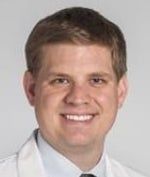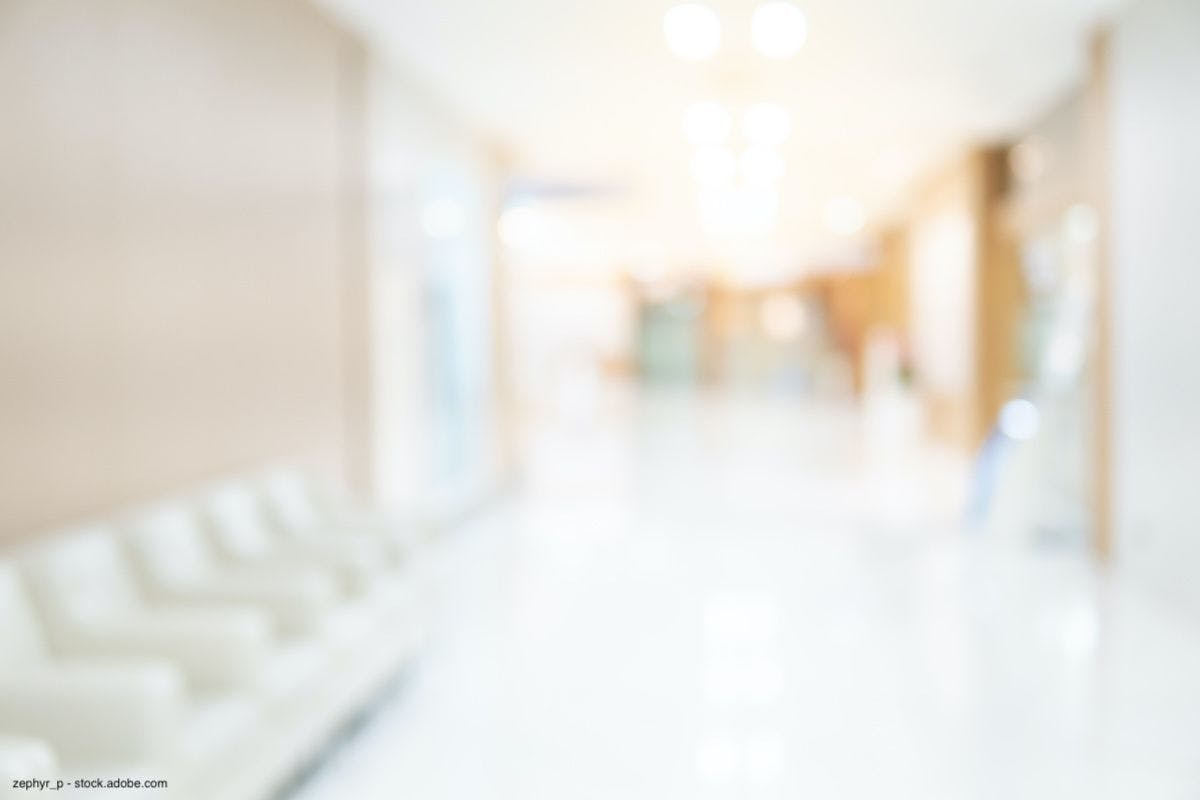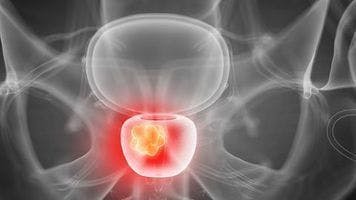Publication
Article
Urology Times Journal
Male sexual health and reproductive medicine: All that glitters is not gold
Author(s):
"With the average cost of treatment ranging from $2600 to $3900 per cycle, clinics offering radial wave therapy have an obvious financial incentive to continue marketing despite the lack of evidence of its effectiveness," write Navid Leelani, DO, and Scott D. Lundy, MD, PhD.
Navid Leelani, DO

With the intensified direct-to-consumer marketing of male sexual medicine treatments, the recent legislative changes in reproductive rights and their unknown long-term effect on assisted reproduction availability for infertile men, and the explosion of telehealth, the practice of male sexual medicine is evolving at a breakneck pace. Specialists in male sexual and reproductive medicine have been tasked with digesting the evolving literature and forming evidence-based treatment guidelines for men with erectile dysfunction, Peyronie disease, infertility, and a host of other conditions. Compared with other areas of urology and medicine in general, male sexual and reproductive medicine has a disappointingly small number of well-designed prospective studies, along with a significant gap in funding for male reproductive health compared with female reproductive health. Several manuscripts published in 2022 started to narrow this gap and provide valuable level 1 evidence supporting (or discounting) key areas within sexual medicine and infertility.
Scott D. Lundy, MD, PhD

For men with severe male factor infertility and nonobstructive azoospermia, surgical intervention is often indicated to retrieve sperm. Testicular sperm aspiration (TESA) and microdissection testicular sperm extraction (mTESE) are 2 commonly used approaches. A recent study by Jensen et al compared the efficacy of these 2 approaches in one of the few prospective randomized-controlled trials in male infertility.1 In the study, 49 patients were randomly assigned to mTESE with a sperm retrieval rate of 43%, and 51 patients were randomly assigned to TESA with a sperm retrieval rate of 22%. Men with failed TESA then went on to salvage mTESE with a combined sperm retrieval rate of 29%. Participants in the mTESE arm, however, had decreased postoperative testosterone levels, and 24% of participants experienced de novo hypogonadism at 6 months. Prior literature has suggested the testosterone drop is transient and that it will likely recover by 12 months. In summary, the study results showed that mTESE remains the gold standard for treatment of nonobstructive azoospermia, but patients should be counseled on the risk of de novo hypogonadism.
Despite this, mTESE success rates remain modest and are subject to the expertise and skill level of the laboratory and andrologist processing the tissue. Multiple hours can be spent trying to find the few viable sperm hidden among a sea of distractors. A recent study by Lee et al examined the power of artificial intelligence to detect human sperm in semen and mTESE samples using bright-field microscopy for nonobstructive azoospermic (NOA) patients.2 They first trained the program to identify sperm from semen samples of fertile patients. After validating the effectiveness of their algorithm, they retrained it to identify sperm in tissue from NOA patients that had been spiked with large amounts of sperm. When testing it on samples containing 3000 to 6000 sperm among other cell types, they achieved 84.0% positive predictive value and 72.7% sensitivity. Finally, without retraining their algorithm, they tested it on samples containing 10 to 200 sperm, replicating the “rare sperm” phenomenon seen in patients with NOA. Their model was able to detect 2969 sperm cells out of a total 3517 with an 84.4% PPV and 86.1% sensitivity. The clinical applications of artificial intelligence and machine learning in medicine continue to expand and have made their way to male infertility. Although this is not ready for immediate clinical use, it does highlight the need for further work to harness the power of technology to improve workflow of andrologists and in turn increase the success of infertility care for patients.
There has been a rapid rise in the need for male sexual health and reproductive specialists as the population ages and the number of comorbidities rise, although certain disease processes that fall within this specialty may be able to be addressed by a general urologist. In an analysis of the current educational landscape, Asanad et al call attention to the need for a structured educational curriculum in residency for male infertility.3 In a survey of urology residents, 54 of 72 respondents (75%) reported that male infertility comprises less than 10% of their training. Compared with residents who did not learn from infertility-trained faculty, residents who were exposed to infertility-trained faculty were 14.4 times more likely to feel confident performing infertility procedures (P < .001) and were more likely to feel confident performing fertility procedures after residency (P = .001).3 For trainees, their career depends on what they are exposed to. Smaller subdisciplines within urology may be more difficult to teach uniformly, and perhaps there are ways to improve the exposure to these areas for motivated residents (eg, visiting other programs).
Within male sexual health, one disease process that all urologists should be able to diagnose and initially manage is erectile dysfunction (ED). With studies citing the prevalence of ED as high as 52%, the demand for providers to manage ED remains sky high. Current treatment options include phosphodiesterase type 5 inhibitors (PDE5is), intracavernosal injections, vacuum erection devices, and penile prosthesis. A newcomer to the field is shock wave therapy, which uses controlled energy to induce angiogenesis.
The short-term effectiveness of focused shock wave therapy for patients with moderate ED was investigated in a double-blind, randomized, sham-controlled trial.4 In this study of 70 patients with moderate ED, 35 were randomly assigned to low-intensity shock wave therapy (LiST) and the other 35 were randomly assigned to sham therapy. After a 4 week washout from PDE5i, patients underwent LiST or sham twice weekly for 6 weeks. One month after treatment completion, 59% patients in the LiST group experienced an International Index of Erectile Function (IIEF) score improvement of at least 5 points, compared with 1 patient (2.9%) in the sham group (P < .001). This effect remained present at 3 months post treatment. Thus, the short-term data for LiST are compelling and suggest this may be a viable option in the management of vasculogenic ED for men with mild/moderate ED. Further studies are desperately needed to validate these findings, and urologists have an obligation to provide patients with an honest assessment of the data and only recommend treatments where the risks (including the financial burden) are outweighed by the benefits.
In stark contrast to focused therapy, radial shock wave therapy uses low-pressure radial shock waves to treat ED. In order to characterize its effectiveness, a randomized, double-blind, sham-controlled clinical trial enrolled 80 men with mild to moderate ED.5 Patients were treated weekly with either radial wave therapy or sham therapy for 6 weeks, and the primary outcome measured was change in the IIEF score between baseline and after treatment. Study results showed that there was no significant difference in IIEF scores between groups at 6 weeks or 10 weeks after randomization. Study results displayed the lack of evidence to support the use of radial wave therapy.
Despite the evidence of their ineffectiveness in managing ED, shock wave therapy and particularly radial wave therapy have been heavily marketed directly to consumers in the US. A recent article using a “secret-shopper” method found troubling marketing and practice trends in the US. The authors noted that patients often are not adequately educated on the different types of treatments and may not know if the administrator is a licensed medical professional.6 With the average cost of treatment ranging from $2600 to $3900 per cycle, clinics offering radial wave therapy have an obvious financial incentive to continue marketing despite the lack of evidence of its effectiveness.
Recent advancements in the field of male sexual health and reproduction present a bright future for the field with new diagnostic and therapeutic options on the horizon. However, it is apparent that demand still outpaces supply for men’s health specialty care. Urologists must work diligently to fill this void to not only increase access for patients to receive evidence-based care, but also to prevent men from falling to prey to practices looking to take advantage of this unmet demand and a vulnerable patient population.
References
1. Jensen CFS, Ohl DA, Fode M, et al. Microdissection testicular sperm extraction versus multiple needle-pass percutaneous testicular sperm aspiration in men with nonobstructive azoospermia: a randomized clinical trial. Eur Urol. Published online May 19, 2022. doi:10.1016/j.eururo.2022.04.030
2. Lee R, Witherspoon L, Robinson M, et al. Automated rare sperm identification from low-magnification microscopy images of dissociated microsurgical testicular sperm extraction samples using deep learning. Fertil Steril. 2022;118(1):90-99. doi:10.1016/j.fertnstert.2022.03.011
3. Asanad K, Nusbaum D, Fuchs G, Rodman JCS, Samplaski MK. The impact of male infertility faculty on urology residency training. Andrologia. 2022;54(8):e14457. doi:10.1111/and.14457
4. Kalyvianakis D, Mykoniatis I, Pyrgidis N, et al. The effect of low-intensity shock wave therapy on moderate erectile dysfunction: a double-blind, randomized, sham-controlled clinical trial. J Urol. 2022;208(2):388-395. doi:10.1097/JU.0000000000002684
5. Sandoval-Salinas C, Saffon JP, Martínez JM, Corredor HA, Gallego A. Are radial pressure waves effective for the treatment of moderate or mild to moderate erectile dysfunction? A randomized sham therapy controlled clinical trial. J Sex Med. 2022;19(5):738-744. doi:10.1016/j.jsxm.2022.02.010
6. Weinberger JM, Shahinyan GK, Yang SC, et al. Shock wave therapy for erectile dysfunction: marketing and practice trends in major metropolitan areas in the United States. Urol Pract. 2022;9(3):212-219. doi:10.1097/UPJ.0000000000000299






















